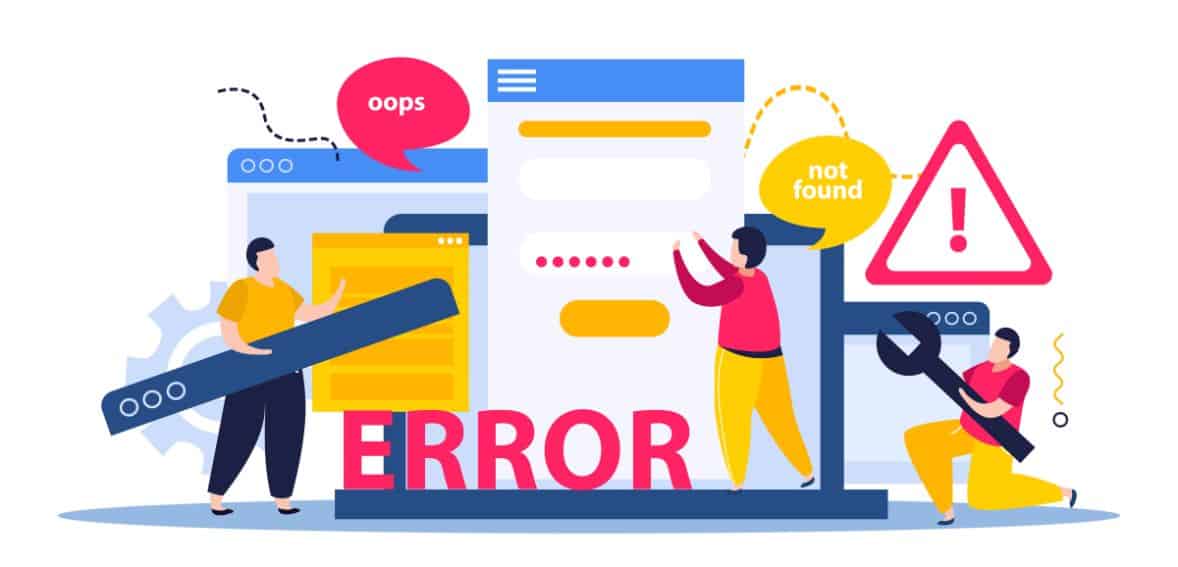
By Ellie Marsden October 15, 2025
Recurring memberships, rather than one-day passes or clothing sales, are the essence of many gym owners’ businesses. Paying the trainers, maintaining the lights, and funding upgrades that encourage members to return are all made possible by those steady monthly or yearly payments.
However, billing mistakes are a crucial area that is frequently disregarded in favor of marketing, retention, and service quality. Errors rarely make noise at first when they happen here. However, they steal thousands of dollars annually through member disputes, incorrect charges, and unsuccessful transactions.
Even little billing errors can result in significant financial and reputational harm in today’s digital-first fitness economy, where consumers anticipate easy memberships and clear costs. Loyal members can quickly become irate ex-customers due to a software error, a poorly scheduled renewal, or a perplexing cancellation policy.
In actuality, the majority of gyms lose money because their systems make payment too difficult or inconsistent, not because customers refuse to pay. The three pillars of long-term gym success—cash flow stability, retention, and trust—can be transformed by being aware of these typical errors and taking proactive measures to solve them.
Mistake 1: Poor Payment Data Hygiene
Poor data management is the first silent killer of gym revenue. Many gyms either fail to automatically update expired credit cards or maintain credit card information that is out of data. Staff members rush to manually pursue members when monthly billing cycles occur and transactions start to fall. Frequently, this follow-up occurs too late, which irritates members and causes needless service interruptions.
The fact that the majority of independent or small gyms continue to use antiquated software that does not automatically ask customers to change their payment methods increases this problem. Declined payments go unreported if there are no intelligent reminders or automated retries. The total impact over time is catastrophic—hundreds or even thousands of dollars in lost profits.
Gyms must make sure that tokenization, automated card updates, and retry logic are used in their billing platforms to avoid this. Payment information should always be secured and instantly synchronized between systems. In addition to lowering losses, clean data increases confidence and makes sure that members don’t perceive your billing procedure as disorganized or incompetent.
Mistake 2: Overcomplicating Pricing Structures
Regularly complicated membership programs are another significant factor reducing gym profitability. Many owners develop countless membership options, including trial offers, weekend-only subscriptions, family packages, off-peak passes, and corporate tiers, in an effort to cater to various customers. Although it may seem like a good idea on paper, flexibility frequently results in administrative disasters.
Customers misinterpret terms, employees enter data incorrectly, and automatic invoicing systems are overburdened with exceptions. Errors increase when your pricing matrix gets too complicated. Members are invoiced for services they never used, or they are overcharged or undercharged. Every error damages trust and takes time to fix.
Simplifying is a solution. All price plans need to feature transparent add-on costs, regular billing dates, and clear terms. Maintaining a simplified structure facilitates staff communication and policy enforcement while also ensuring billing accuracy. Although complexity may seem like customization, it’s actually one of the quickest ways for profits to flow out.
Mistake 3: Failing to Automate Recurring Billing
When you have fifty subscribers, manual billing can seem possible, but when you reach five hundred, it becomes a complete mess. Surprisingly, many gyms still receive recurring payments using semi-automated systems, spreadsheets, or manual invoicing. This allows for a great deal of error.
Members become confused and cash flow becomes unclear as a result of missing bills, duplicate charges, and irregular scheduling. Automation gives predictability in addition to time savings. Refunds, tax computations, payment retries, and renewals are all handled with ease by contemporary billing software. Additionally, they have direct integration with accounting and CRM systems, guaranteeing that each transaction is recorded and balanced.
Automated gyms increase customer pleasure while avoiding expensive errors. Convenience and transparency are important to members, and an automated method provides both. On the other hand, a manual procedure that causes mistakes or delays charges can easily convert devoted members into vocal critics.
Mistake 4: Ignoring Failed Payments
Ignoring failed payments is arguably the most frequent and harmful billing error made by gyms. Every month, a few transactions will unavoidably fail because of network problems, expired cards, or insufficient cash. The ability to react swiftly and efficiently is what distinguishes financially sound gyms from those that are losing thousands.
That revenue is nearly always lost if a payment fails and no follow-up takes place. Worse yet, a member can keep using services without realizing that their payment was unsuccessful. Frustration occurs when the problem is discovered weeks later, particularly if the gym tries to collect backdated dues all at once.
Proactive communication and automated recovery are the solution. In addition to retrying at optimal intervals and compassionately suspending accounts if problems continue, smart billing systems can immediately notify members of unsuccessful payments. This strategy demonstrates professionalism and stops income leaks. Instead of fostering animosity, a clear retry procedure fosters confidence.
Mistake 5: Lack of Clear Cancellation Policies
Uncertain or strict cancellation procedures are one of the concerns that lead to the most conflicts and chargebacks. Gyms expose themselves to controversy when they don’t clearly clarify things like notice periods, refund eligibility, or contract commitments. Members who think they’ve cancelled frequently keep getting bills, while others who forget the terms of their contracts blame the company for being dishonest.
This is a reputational as well as an operational issue. Chargebacks resulting from contested cancellations harm merchant processing reputation in addition to reversing income. The gym can be flagged as high-risk by payment processors, which might lead to increased fees or possibly account freezing.
Gyms must create accessible, equitable, and transparent cancellation procedures to avoid this. Permit digital cancellations, automated email confirmations, and the saving of acknowledgment records for future use. In addition to safeguarding the company, a reasonable cancellation policy reassures clients that the gym places equal importance on honesty and fitness.
Mistake 6: Neglecting Refund Protocols
Accounting chaos ensues when refunds are processed manually or inconsistently. Instead of using set processes, several gyms handle refunds based on individual requests or judgment. Staff and members become frustrated as a result of mismatched data, delayed settlements, and accounting problems.
The most prosperous fitness companies incorporate refunds into their invoicing processes and keep transparent return schedules. Refunds for certain situations, such as early cancellations or double charges, can be automated to improve transparency and remove subjectivity.
Smooth refunds are noticed by members, and even after cancellation, this trust fosters increased loyalty. Confusion, chargebacks, and eventually financial loss result from ignoring this sector or giving refunds little priority. Although a well-designed refund policy may cost you money in the near term, it will save you stability and goodwill in the long run.
Mistake 7: Not Tracking Member Payment Behavior
Data has a story to tell, and it is expensive to ignore. A lot of gym owners neglect to keep an eye on patterns in member payment patterns. Recurring late payments, for instance, may be an indication of discontent, but early renewals may show strong involvement.
Gyms miss out on possibilities to reduce turnover or streamline their gathering process when this data is left unanalysed. These trends can be anticipated and addressed with the use of modern payment analytics solutions. For instance, changing the billing dates could increase success rates if some members consistently miss payments close to payday.
Higher reductions throughout a membership tier could indicate a widespread billing problem or a pricing discrepancy. Knowing how members pay is just as crucial as knowing why they stick around. Payment data provides insight into both loyalty and financial risk—and when used intelligently, it can transform your bottom line.
Mistake 8: Poor Integration Between Systems
Disconnected systems are another costly trap. Errors are unavoidable when your payment processor, accounting software, membership management, and point of sale system are not communicating with one another. Inaccurate balances, missing records, and duplication result from manual data transfers.
Small gyms frequently develop naturally, acquiring new equipment as needed without combining them. They wind up overseeing a web of systems with data that changes over time. In addition to slowing down reporting, this lack of integration results in cash flow blind spots and gaps that allow fraud or error to go undetected.
These inefficiencies are removed by investing in an integrated management platform. Every transaction syncs instantly, membership data is correct, and financial reporting is made simple when your systems are integrated. Integration makes the difference between revenue loss that goes unnoticed and seamless operations.
Mistake 9: Mishandling Discounts and Promotions
Promotions and discounts are effective at attracting new members, but they can also be harmful if handled improperly. Offers like “first month free” or “refer a friend” are frequently introduced by gyms without being appropriately coded into invoicing systems. Promotions consequently either don’t apply or last longer than planned.
Accounting errors also occur when employees manually override prices or apply inconsistent discounts. These mistakes can result in thousands of dollars in missed revenue or reconciliation work when they are spread over hundreds of members. Automation should be used to closely monitor promotions.
Every discount must have an approval procedure, a time limit, and an automated expiration date. Having a clear view of ongoing campaigns guarantees that missed incentives won’t reduce profitability. While a poorly handled promotion might subtly undermine your revenue stream, a well-executed one can encourage growth.
Mistake 10: Ignoring Regulatory Compliance and PCI Standards
Compliance is essential in the era of digital payments. However, a lot of gyms ignore their responsibilities under the PCI DSS (Payment Card Industry Data Security Standard) or believe that everything is taken care of by their third-party processors. There is danger in this complacency.
A single non-compliance fine or data breach can be significantly more expensive than any late membership fees. Encryption, access control, safe data storage, and frequent vulnerability assessments are all part of compliance. The way data moves via your systems is your gym’s responsibility, even if you utilize a payment processor.
Trust can also be harmed by noncompliance since members expect their financial information to be protected. Compliance is actually a revenue safety, even though it may appear like red tape. In addition to avoiding fines, gyms that maintain compliance show their clients, partners, and processors that they are dependable and professional.
The Hidden Impact of Billing Mistakes
The combined impact of these billing errors might be disastrous. The effects are more significant than the short-term monetary losses. Member satisfaction declines, staff time is wasted chasing mistakes, and cash flow becomes irregular. Small flaws in billing procedures over time can damage a brand’s retention and reputation.
Consider a gym that loses $3,000 a month as a result of chargebacks, inaccurate billing, and failed payments. That’s $36,000 lost over a year, money that could have been used for staff bonuses, marketing initiatives, or new equipment.
The work needed to correct billing accuracy is much less than the total expense of ignoring it. In terms of both finances and reputation, gyms that view billing as a fundamental operational discipline rather than a back-office task perform better than their rivals. Accuracy in billing is, at its core, a reflection of professionalism and respect for your members’ trust.
Building a Smarter, Error-Free Billing System
Gyms must reconsider billing as a component of the member experience rather than merely a transaction in order to fix these errors. The payment procedure ought to be as smooth as the gym floor. An easy-to-use self-service portal should be available to members so they can manage subscriptions, change cards, and check their billing history.
The cornerstones of a current billing strategy are automation, integration, and transparency. Simplified accounting, quick collections, and safe processing are guaranteed when reputable software providers are partnered with. Payment workflow audits on a regular basis might also reveal hidden inefficiencies before they become expensive.
Training employees is equally important. Not only should your administrative staff and front desk know how to accept payments, but they should also know why each step is important. Educated teams prevent errors before they happen and can communicate clearly with members when issues arise.
An easy-to-use self-service portal should be available to members so they can manage subscriptions, change cards, and check their billing history. Adding contactless check-in systems further reduces point-of-entry friction and reinforces a seamless, tech-forward gym experience.
Conclusion: Precision Pays Off
Discipline is essential to the fitness profession, and billing should be no different. Every transaction shows that people have faith in your company. When billing is handled carefully, accurately, and openly, that trust grows into financial security and loyalty. Neglecting it will inevitably lead to disputes, chargebacks, and lost revenue.
Preserving connections is just as important as preserving revenues when it comes to avoiding expensive membership billing errors. Rarely do members who feel misled or overpaid come back. However, people who receive regular, clear, and error-free bills end up becoming advocates rather than merely clients.
Gyms that put accuracy at the forefront of their financial operations will discover that trust leads to sales. Through data cleansing, plan simplification, process automation, and transparency, fitness businesses of all sizes can protect their future and turn billing from a hidden liability into a competitive advantage.




